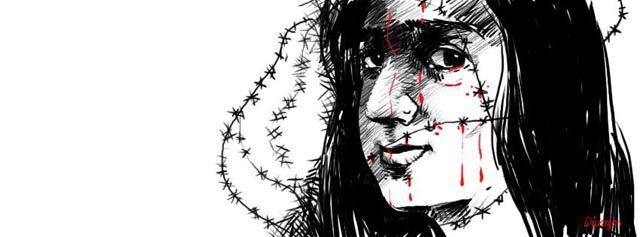
True South Asian Stories of Life behind the Curtains
“On Tuesday, October, 16th, the Alpharetta 911 Center received an emergency call about an argument at an apartment located on Jefferson Way. When Alpharetta police arrived, they found a female victim critically injured.
Alamin Nanji, 26, was taken into custody. At that time, he was charged with aggravated battery. But, Police say the victim, Sanaa Merani, has died in the hospital from the gunshot wound to the head that she suffered during the domestic dispute.
Nanji is now facing felony murder charges and is currently being held in the Fulton County jail, without bond.”
This short matter-of-fact report is from Atlanta station, WSB Radio, and makes you wonder – who was Sanaa Merani? Google the name and you see with sadness, a life unfold, and then brutally cut short. School information, a wedding registry, and then this startling report of a gunshot and death reportedly at her own husband’s hands.
Sanaa Merani was only 25 when her life was extinguished by the very man who should have been her protector and partner.
That Dangerous Place Called Home
Then you have this other startling news report from California:
“A resident of Irvine, CA, Shalabh Rastogi (39) confessed to fatally strangling his wife, Jalina George (40). He called the police to confess to the murder and stated that Jalina and he were arguing and were having “marital problems” when he attacked her in their bedroom. He left Jalina’s body in a closet and called the police at 9:40 PM. The couple has 3 young children who were spending the night elsewhere. The couple had been married for 13 years.”
Then there is Lakhvir Singh, 28, of Indianapolis who was sentenced to 25 years for the shocking abuse of his wife who was made to sleep on the floor, given very little to eat, referred to as ‘b-‘ by Singh and his relatives, forced to have sex and do household chores around the clock, according to media reports.
The word ‘home’ immediately conjures up images of comfort, security and peace – yet for many women, perhaps there is no more dangerous and frightening place than home. Behind its closed doors and curtained windows can be a whole litany of horrors from domestic violence to psychological traumas, intimidations and beatings to molestation by family members.
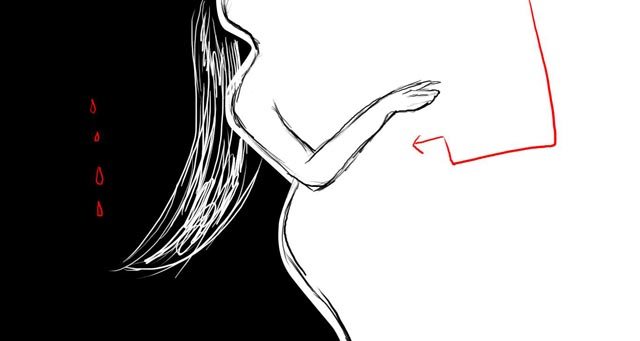
Rajinder Kaur’s Story: An alcoholic husband, a new immigrant wife
Shocking as these true stories are, they are not uncommon, for domestic violence happens more frequently than we’d like to believe. Some end in knifings, shootings and deaths, others in physical bruises and mental hurts which last a lifetime. It is one of those hush-hush things which people don’t like to talk about, especially those in the Indian community because it may reflect badly on them.
While Sanaa Merani and Jalina George are no longer with us to tell us of the hell they went through, we have two real-life women Rajinder Kaur and Ayesha Khan who talked with us about the living nightmare of their daily existence, of their isolation, fear and pain as they tried to cope with a world which was uncaring about their ordeal.
Rajinder Kaur could be any Indian woman, bound in holy matrimony at an early age and sent abroad with a man she hardly knew. A Punjabi bride with little education, she nervously followed her construction worker husband to New York, already aware that he was an alcoholic and had a foul temper. She had tried to dissolve the relationship in India but her in-laws and parents pushed her to give it a try, telling her he would change with marriage and children.
A Drama Every Night, and the cops too
On arriving in New York, she found he did not even have a home or a regular job, and they moved from place to place sharing space with other families. Every morning she would cook him a packed lunch. Often he would eat this and return home without going to work to drink again, brawl and fight. There was a drama every night she recalls, and sometimes the cops had to be called in. She says she did not get even one percent help from ‘society’ and had no friends or family.
Finally, 15 years ago, she walked out of the house with two small children in tow. She did not know much English, she did not anyone but had put herself in the hands of Manavi, then a young non-profit. The advocates came to pick her up from home: her husband was fully drunk; the police had come in and the neighbors had gathered. Rajinder had no idea where she was headed but bit by bit her life straightened. She was taken to psychologists, her children were found good schools, she was given ESL training. She worked in people’s homes, cleaning and cooking for them, and the divorce proceedings were started.
In 2002, her husband died in a drunken binge where his house burnt down. Rajinder had moved far from that place, mentally and physically. Today she works as a nurse, her boys have recovered from the trauma of constant beatings and abuse and are doing well in high school and college. Mainly she has the freedom to live her life in peace.
A story of courage, of an escape from the house of horrors. But not all women are so fortunate.
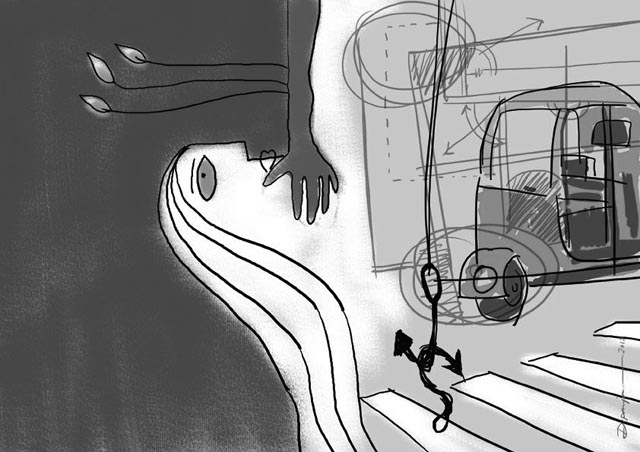
63 reports of murder and attempted murder of South Asian women in the U.S.
According to the Asian and Pacific Islander Institute on Domestic Violence, a report of murder and attempted murder in the U.S. and Canada from 1981 to 2000 showed 63 reports of murder and attempted murder of South Asian women in the U.S. Although the majority of victims were women, the women’s children and relatives were also affected in these incidents of domestic violence.
Of course, domestic violence is not solely an Indian-American problem—it is an Indian problem, an American problem, a global problem. According to statistics released by the World Health Organization, 35 percent of women around the world have been raped or physically abused and 80 percent of the time this violence occurs in the sanctity of home—at the hands of a spouse or partner.
It exists everywhere because it symbolizes a power struggle, a patriarchal way of looking at life. It affects not just the poor or working-class, but also the privileged. Social advocates have seen moneyed and degreed women professionals with purple bruises and black eyes. There was also the recent case of Bollywood actress and former Miss World Yukta Mookhey lodging a complaint against her husband, Prince Tuli, a U.S. businessman, for alleged domestic violence.
Beauty, education and wealth are no safeguard against domestic violence.
Ayesha Khan’s story: Not Without My Daughter…
Meet Ayesha Khan, another real-life woman who’s managed to make a fresh life for herself, after years of emotional abuse. Ayesha (not her real name) got married and came to the US with her husband, a well-to-do computer specialist but right from the start she was the victim in a family dominated by his parents and sisters. Even though they visited as guests, she was always belittled and not included in anything. She was the cook and the cleaner and that was all. If she asked to buy grapes, they would tell her she should go and work if she wanted such things; she had no credit cards or money of her own, and her husband would lock the bedroom when he left. She had one daughter who was totally influenced by her father and the in-laws.
Isolated and ignored, Ayesha found her jewelry had been taken away, her young daughter alienated and the joint account had just $65 in it. Often there was no food to eat as they would tell her ‘This is our food, our water.’ When she took a job, they made sure she had no way to get there. It was a daily battle, with them trying to get her to leave or ask for a divorce.
Finally, browsing on the Internet, Ayesha who was without friends or family, came across Raksha, a non-profit group, which helped her get a divorce, understand the mystery of credit cards and financial matters and also, get a job and most important, get custody of her young daughter.
The daughter who had clung to her hand till she was 8-years-old, is still alienated though things are improving now that they are in therapy. “We are taking baby steps,” says Ayesha and cannot thank Raksha enough for turning her life around. She recalls that when she was married, she would even cook biryani and cakes for her in-laws to take back to India with them so they would not have to cook immediately on arrival. She did everything she was supposed to do but somehow, in a patriarchal society, even home-cooked biryani flown from the US was not enough. A larger pound of flesh is required.
Patriarchy’s Power Struggle
According to the Asian and Pacific Islander Institute on domestic violence, a report of murder and attempted murder in the US and Canada from 1981 to 2000 showed 63 reports of murder and attempted murder of South Asian women in the US. Although the majority of victims were women, the women’s children and relatives were also killed in these incidents of domestic violence.
Of course, domestic violence is not solely an Indian-American problem – it is an Indian problem, an American problem, a global problem. According to statistics released by the World Health Organization, 35 percent of women around the world have been raped or physically abused and 80 percent of the time this violence occurs in the sanctity of home – at the hands of a spouse or partner.
It exists everywhere because it symbolizes a power struggle, a patriarchal way of looking at life. Yet, there are certain cultural aspects which bring a uniquely South Asian flavor to the issue and so often need unique solutions.
Nor are the cases of domestic violence limited to the poor or working-class – social advocates have seen moneyed and degreed women professional with purple bruises and black eyes. There was also the recent case of the former Miss World and Bollywood film actress Yukta Mookhey lodging a FIR against her husband Prince Tuli, a US businessman, for alleged domestic violence.
Beauty, education and wealth are no safeguard against domestic violence.
Few statistics, an Unfinished Story
Domestic violence in the South Asian community seems an unfinished story without many statistics or details as victims and survivors often do not want to report incidents. There is a mutual wall of silence about these dealings, both by the abuser and the abused. Survivors learn to playact and hide the truth from the outside world. After all, isn’t home supposed to be sacrosanct, a sacred, private space? Isn’t it a betrayal of family to discuss these ugly happenings with outsiders?
But not reporting does not mean that these incidents don’t occur. The Asian Family Violence Report of 2000 did a study of South Asian women in the Boston area and found that 40.8 percent of the participants reported that they had been physically or sexually abused in some way by their current male partners. 15.8% reported injury or the need of medical services as a result of a partner’s violence
What was surprising was that only 3.1% of the abused South Asian women in the study had ever obtained a restraining order against an abusive partner. As the study points out, this rate is substantially lower than that reported in a study of women in Massachusetts, in which over 33% of women who reported intimate partner violence in the past 5 years had obtained a restraining order.
I first wrote about the problem of domestic violence in the Indian-American community back in the 80’s: ours was a newer immigrant community then and there were fewer South Asian advocacy organizations then, fewer cases. Now 30 years later, the South Asian population has grown and so has the problem. In the 80’s there was only Manavi, the first South Asian organization to address domestic abuse in New Jersey. Soon after that a group of young women started Sakhi in New York, and slowly organizations have come up in many states, including Apna Ghar in Chicago, Narika in California and Raksha in Atlanta. There are more organizations now, more openness, yet domestic violence is alive and well in the community.
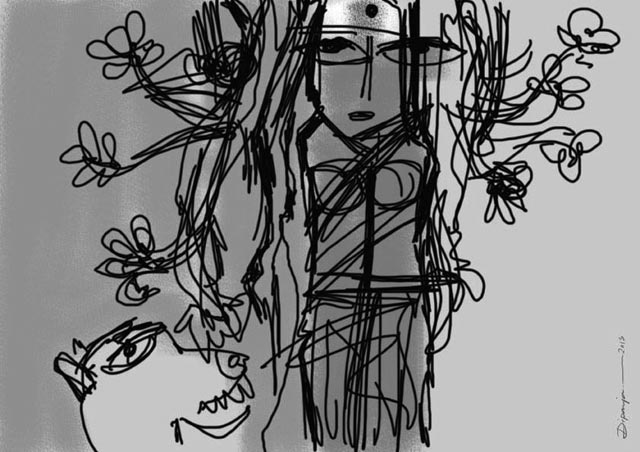
Women Warriors: South Asian Women’s Advocacy Groups
The surprise is that this affects women of all socio-economic backgrounds, and one of the first women I had interviewed was a well-to-do and highly accomplished physician. A woman who headed her own clinic did not have the power to sign personal checks and was totally traumatized by her husband. The bruises on her face made her as helpless as the weakest, s
Then there is the very South Asian cultural burden of shame, which puts the blame solidly on the victim and demands silence. Little surprise then, there are very few statistics or testimonies available from South Asian women.
Raksha
According to Aparna Bhattacharyya, Executive Director of Raksha in Atlanta: “There are few statistics – women do not talk about this and so it is really hard to track the community .In police reports they don’t even have a category for Asian Americans! Even if they don’t categorize us as Asians, we are not counted at the end of the day. Census figures and police reports are on parallel tracks – demographics and ethnicity are separate, and you have a lot of judges who don’t know about local Muslim laws.”
It’s all about changing attitudes says Bhattacharyya. How we talk about people, how we don’t support people – it’s a lot about us as a community – the shame is created by our community – how we treat people when they get a divorce – how we alienate people when things don’t work out for them. The Violence Against Women Act has played a critical role in ensuring access to survivors of domestic violence, sexual assault, dating violence and stalking. The newest version creates even more access for immigrants, LGBTQQI and Native American survivors. ( A large portion of Raksha’s work is funded through Violence Against Women Act funds.)
Indian American women don’t often go to shelters and have a fear of immigration laws as well as Indian society. Since we are a smaller part of the population, our figures on homicide and suicide are also smaller. However, the rates of homicide have increased due to honor killings, murder suicide. Many don’t reach out for mental health support.
Who bears the brunt of the problems asks Bhattacharya? It is largely the children who are stuck in the middle and that impacts everybody.
More women are certainly seeking help – when Raksha started there were just 10 clients – now there are over 200 women. All socio econ – higher echelon as well as strugglers – all have approached us. It’s about power and control – just like rape is not about sex out but about one person wanting to have power over another without having permission.
Manavi
The oldest organization is Manavi and Shamita Das Gupta has studied this indepth and written many books on this. Manavi was the first group to start Ashiana, a live-in shelter in an undisclosed location for victims of domestic abuse, recognizing that Indian women would not feel comfortable in mainstream shelters. Languages and culturally sensitive material are vital as well as pro bono services.
South Asian women are particularly vulnerable as they come into a new country, leaving their support systems behind. In a new country, often a language they do not know, and with not much money or access, they are often at the mercy of the husband, often in-laws whom they don’t know. Here comes the saga of the NRI bride who leaves all and comes to join a new family here
Sakhi
Next May Sakhi will have completed 25 years of helping victims of domestic violence. Asked for an overview on how things have changed, Sethu Nair, Manager of Marketing said, “Sakhi serves approximately 500-600 women every year. This past year there has been a slight increase in the numbers served. We don’t think it is a result of any increase in violence in the community, rather a result of Sakhi’s efforts to reach more South Asians.
There are many more South Asian women in New York City who are in need of Sakhi’s critical services. Many women go unserved, largely as a result of silence around the issue of domestic violence and sexual abuse, as well as the hesitation to acknowledge abuse as a community problem.
More and more, says Nair, they are discovering that it’s an economic issue. Often when we think of domestic violence, we think about women being physically abused and mentally tortured. There are however many other ways that abusers exert their power and control. Sexual abuse, isolation, threats and other tactics of financial control are aspects of abuse that are often overlooked.
“We noticed that many of the women who come to our office, found that even though they had never taken out a credit card in their own names, they had bad credit. Unable to access credit, many women we saw were unable to often take the first step they need to take to establish a life of self-sufficiency and freedom. We know that limiting and controlling a woman’s access to monetary and financial resources financial control is a tactic abusers use.”
Last year, Sakhi worked with the Manhattan Borough President’s to investigate whether this is an issue across communities, and found that financial abuse and control is an extremely prevalent tactic of power and control that abusers exert. Says Nair, “Using our report, “The Untold Cost of Abuse” we have been working to advocate for financial abuse to be included in the official definition of domestic violence, so that this abuse is acknowledged in legal proceedings as a debilitating form of abuse.”
Sakhi has provided crisis intervention to 581 women, and offered workshops focusing on violence prevention and building self esteem.
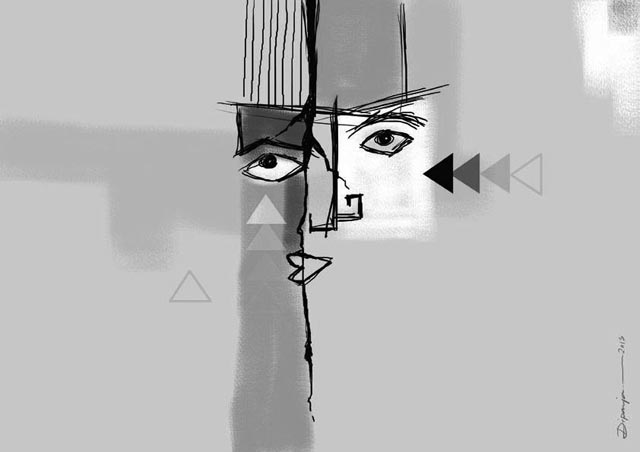
NRI Marriages & Abandonment
NRI marriages bring yet another facet to domestic violence, of women who are shorn of all social connections when they join their green card holding or citizen spouse in the US. “Like in any other marriage that runs into difficulties, NRI couples may experience various problems such as incompatibility, stress related troubles, violence and abuse, one partner falling out of love, and economic crisis,” says Dasgupta.
“Having said that, I do believe that couples in NRI marriages experience some particular problems that ensue from their status as immigrants. As an organization that deals with violence against women, we are receiving more and more calls from women married to émigrés and abandoned. This is becoming a serious problem in our community.”
She points out that most of the South Asian women’s organizations in the US now have between 5% to 20% of their workload devoted to assisting women who have been deserted by their immigrant husbands outside the U.S. A few women whose husbands have intentionally locked them out of their homes, vanished without notice, or served divorce papers without warning, have lived temporarily in Manavi ‘s safe-home, Ashiana.
“It’s a horrible thing but it happens within our community,” says Das Dasgupta. “ I think there are still problems with dominance and lack of equality but at least there’s some quicker resolution.” She says that most women were able to find their own footing through legal, economic, and emotional assistance available here. This is because of the social safety net already in place in this country.
“However, we are discovering that many women who are living with their husbands in the U.S., are coercively or deceptively taken back to India and left there with no way of returning,” she says. “Their spouses destroy their travel papers, withdraw visa support, and or leave them without financial resources to ensure that they cannot come back to the U.S.” Often they are granted a divorce by default, if the wife happens to be abandoned in India.
Within the family there are uglier aspects such as molestation and rape, and that is why Dasgupta says at Manavi, they take a larger look at the various kinds of violence within the home, from physical and financial violence to sexual violence, and including stalking and abandonment.
Then there are special needs of the women whose husbands are here on HIB visas, and hence the wives aren’t allowed to work. Alimony and financial support, getting the divorce all become stumbling blocks.
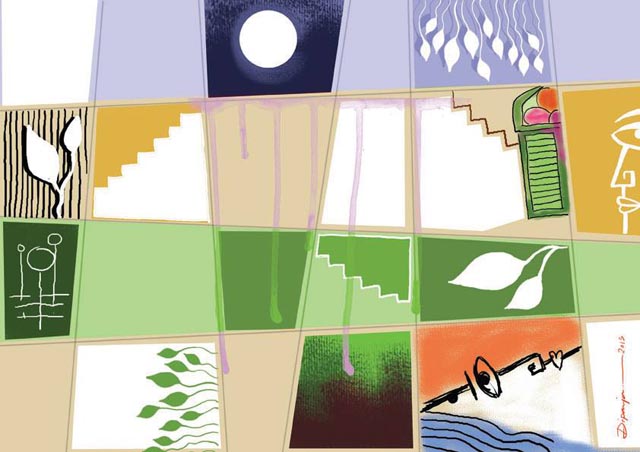
The good news is that there are several South Asian organizations in the US and many of them offer help and vocational support to abused women. There are many laws to support women – and unlike in India, justice moves swiftly. The climate of openness in the US fostered by talk shows and the media also make it easier to discuss one’s problems and get support.
Turning Point
For Muslim women, there are special challenges as mainstream organizations aren’t always familiar with Muslim laws. Founded in 2004by Robina Niaz, Turning Point for Women and Families is the first and only not-for-profit organization in New York City to address domestic violence in the Muslim community. To date, Turning Point has served over 750 Muslim women, girls and children, most of them recent immigrants, coming from over 30 different countries.
Turning Point provides women and children with crisis intervention, shelter, food, childcare, free and confidential counseling, and legal/immigration referrals. The organization mentors social workers to acquaint them with the special needs of the Muslim community.
The second generation of Indian-Americans, having grown up here, also tend to be braver about facing social stigmas and more open and emphatic – and into advocacy and helping out. Many are finding careers in the non-profit sector and ready to take on causes which may not make them big bucks. This idealism makes many young lawyers take on advocacy or work on a pro bono basis with women’s organizations.
Breakthrough
Take Mallika Dutt, President of Breakthrough, who has devoted her energies to getting the word out about all the injustices women face from domestic violence to trafficking and human right abuses. Breakthough is a powerful communications tool for exposing the problems which beset women at home. The Bell Bajao campaign, which asks people to intercede and get involved when they witness domestic violence in their neighborhood, has had a strong impact in India
Everyone including Amitabh Bachchan seems to have got involved. In one startling video Boman Irani has also lent his acting skills – a powerful video which shows the impact of intervention on a volatile situation of domestic violence. It is not other people’s problem and now ordinary people like clerks, software engineers and bus drivers have intervened to make a change.
We all are diminished by the scourge of violence against women. ‘Bring domestic violence to a halt. Ring the bell.’ It is a powerful tool in congested residential areas where everyone lives in such close quarters but now the concept has gone international, and now ordinary people like clerks and bus drivers have intervened to stop domestic violence. Ring The Bell calls on men and boys around the world to take a stand – even in China – and make a promise to act to end violence against women.
Taking Ownership of the Problem
For real change to happen, though, our community has to take ownership of the problem. Be it any religion, the guardians of the faith have to realize that they are responsible for all their parishioners, not just the male members. Rajinder Kaur recalls how the gurudwara she attended turned its back on her when she needed help with translation services. It took complete strangers from the nonprofit world to lend her a hand, helping her to learn driving and English skills. It was Manavi which created Ashiana, the first shelter in New Jersey for South Asian women, and it was here that Rajinder found a safe home for herself and her children, with no questions asked. She was able to stay there for 15 months, till she felt able to take on the larger outside world.
Ayesha recalls how she had tried to get help from the imams of her mosque in saving her marriage but in spite of telling them about the lack of food, the locked bedroom and car, she was just lectured on listening to her husband and in-laws. She had no cell phone at that time and would walk all the way to a Wal-mart which had a public phone to make these calls. Each time she put down the phone, she realized for the imams it was her husband who was important, the one who was contributing to fundraisers at the mosque. What he did would always be right with the imams, and she wonders aloud, did they not have daughters?
Indeed, it might be a step in the right direction for temple, gurudwara and mosque committees to give more voice to the women in their congregation and appoint a woman representative to oversee the problems women face.
“I Wonder Why Women Give So Much Pain to Women?”
And age is no barrier. Rajender Kaur tells of elderly women who have sought help in the homeless shelter because their sons and daughters-in-law don’t want them at home. “They don’t beat them but when they throw them out, that’s domestic abuse too,” says Rajinder. “I wonder why women give so much pain to women?”
In the end, domestic violence is a global problem and one which people can solve by becoming proactive. At the heart of it all, it is about respect and treating everyone – male, female, adult and child – as a unique human being with a right to their own bodies and life. Since each of us want this simple and intrinsic right for ourselves, we just have to learn to give it to others too.
Then, perhaps, we will see fewer victims like Sanaa Merani, whom a friend remembered online with these words: “Sanaa, such a kind, caring, soul. So full of life and laughter. Taken away from us too soon. Untimely and tragic. We went to boarding school together and she was the baby of the group—a little sister to all of us. The thought that she is no more is so hard to accept.”
And for those hesitating to take that first step, to remake their lives, this is what Rajinder Kaur has to say about leaving the men who have destroyed their humanity: “Don’t waste your life, don’t waste your time with those kinds of people – they will not change. Not only will your life be ruined but so will the life of your children. Here you have every kind of help – the cops will get you to a shelter but you have to have the will power and you have to be strong.
Remember, if one door closes – a hundred open. The world is out there for you and you can make your life whatever you want it to be.”
(C) Lavina Melwani
(This article first appeared in Khabar magazine)
Resource Guide
Please click on the links below to access resources that South Asian women facing abuse might find useful.
List of South Asian Women’s Organizations by state:
List of organizations
Official website for the state of NJ:
http://www.nj.gov/humanservices/welfare.html
Information on county based shelters and general DV resources:
http://www.njcbw.org/guide.htm
http://www.njcbw.org/resources.htm
Websites for all counties and municipalities (lists police stations, etc.):
http://www.state.nj.us/nj/govinfo/county/localgov.html
Addresses of family courts, probation and welfare offices in NJ by county:
http://www.helplinelaw.com/law/usa-new20jersey/family/address_family_courts.php
Links to all Dept. of Motor Vehicles in various counties:
http://www.state.nj.us/mvc/
Link to NJ Transit:
http://www.njtransit.com/
Link for Division of Youth and Family Services:
http://www.nj.gov/humanservices/dyfs/index.html
Link to welfare:
http://www.nj.gov/humanservices/welfare.html
Link to Rape Crisis Centers in NJ:
http://www.njcasa.org/centers.htm
Link to County based disability services:
http://www.wnjpin.state.nj.us/services/cofd.htm#atlantic
Forms for people representing themselves in court:
http://www.judiciary.state.nj.us/prose/index.htm
Contacts for women with development mental physical disabilities:
If the woman is not able to do the intake, a staff person can give the information on her behalf. Intake requirements-Social Security Number, Medical Insurance and Date of Birth.
- Behavioral Disabilities – Piscataway NJ-1-800-969-5300.
- Community Services in Trenton ask for intake dept- 1-609-292-4500.
- Division of rehabilitation- for assessments-732-937-6300.
- Direct services for clients in Middlesex County after the easement are completed.732-247-8155.
Child mental disability contacts in Middlesex County:
1-800-843-5437, 1-800-792-8610 or 1-800-418-3401
Links to free and/or less expensive medicine for low income households:
http://www.rxoutreach.com/
($20 for a 3-month supply as per prescription)
http://www.freemedicinefoundation.com/
($5 per application)
(The above list is Courtesy – Manavi)
Report on Financial abuse by Sakhi
http://www.sakhi.org/sakhi-unveils-report-on-financial-abuse-co-authored-with-mbpo-scott-stringer/
Asian Pacific Domestic Violence
http://www.apiidv.org/files/DVFactSheet-SouthAsian-APIIDV-2012.pdf
:

8 Comments
Sethu, thanks for your comment. Sakhi does a great job of reaching out to survivors of domestic violence as do the other US based organizations. There is a full list of these organizations in the resource guide and I hope women will have the courage to seek help.
Lavina,
Thank you so much for putting this together. There is always so little in media and the news, that truly captures the reality of abuse as it plays out in the lives of South Asian women.
Domestic violence like you said, is not just an Indian-American issue – it affects people in every country, state, city, neighborhood, home in the world, but the silence around the issue makes it even harder to address it as the severe issue it is!
Thank you for helping break the silence, and for featuring the many South Asian organizations that do such great work to respond to the horrendous experiences of women.
Via Facebook
Kudos to all these women who are trying to help south Asian women!
– Surekha Demarest
Input from Lassi with Lavina page on Facebook
https://www.facebook.com/LassiwithLavina
5786 people saw this post
21 Likes on Facebook
Archena, I agree. A lot is under the radar and many people don’t know about it.
Hi Swati, it is the reality. Thankfully, these organizations are there to give real support.
I am in Alpharetta, GA too and it is really shocking and sad to see this.
Such a sad story!! 🙁